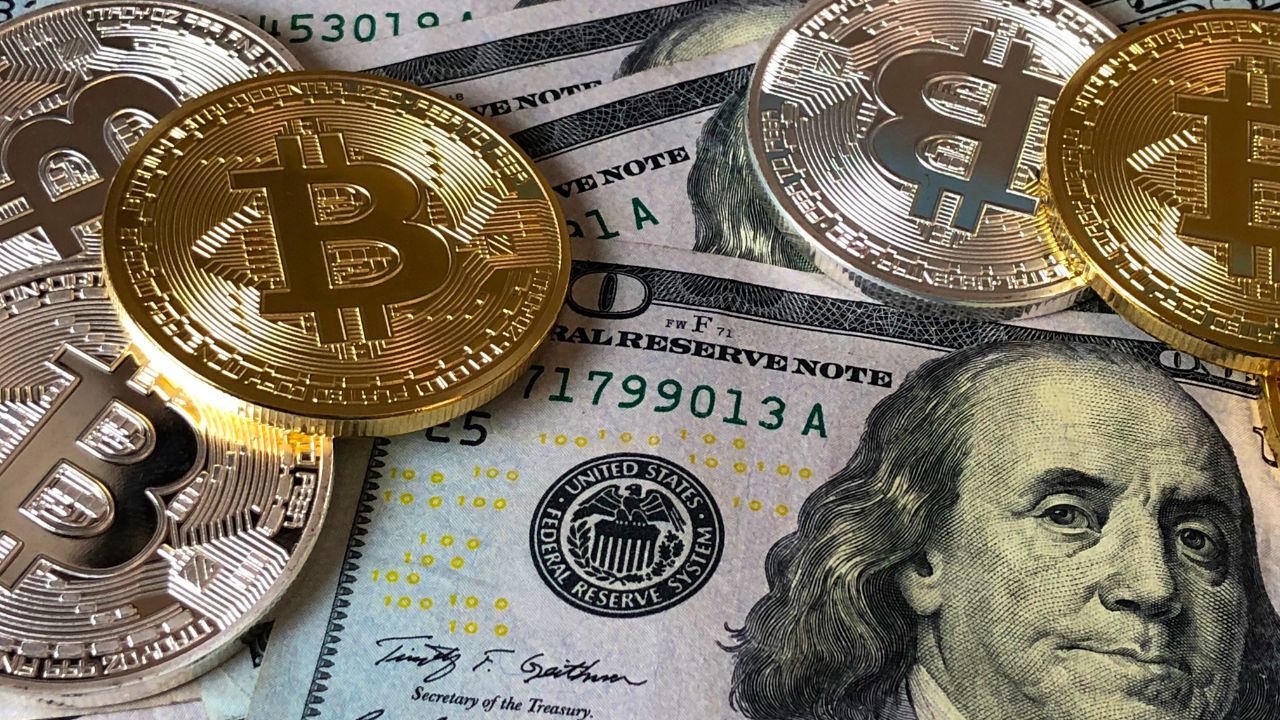Thinking about jumping into crypto? You’re not alone. Over 420 million people globally now own cryptocurrency—and that number keeps rising fast! But let’s be real: crypto can feel like a rollercoaster of hype, scams, and confusing tech jargon. Whether you’ve just heard of Bitcoin or you’ve been eyeing altcoins like Ethereum or Solana, you probably have one big question: Where do I even start?
This guide is here to cut through the chaos. From setting up your first wallet to managing risks and choosing the right strategy, we’ll walk you through everything you need to know about how to start investing in crypto—even if you’ve never invested a dollar before. Let’s dive in and demystify your first steps in the exciting world of digital assets.
🚀 Explore Project Serenity and see if it’s right for your crypto journey
What Is Cryptocurrency and Why Should You Care?
Cryptocurrency is a form of digital money designed to be secure, decentralized, and—unlike traditional currencies—not controlled by any government or central bank. Powered by a technology called blockchain, these digital assets allow people to send, receive, and store value online without relying on banks or third-party intermediaries.
So, how does it work? Imagine a massive, unchangeable public ledger that records every transaction made with a given coin—like Bitcoin or Ethereum. That’s the blockchain. It ensures transparency, security, and removes the need for a middleman. Instead of storing your money in a bank, you hold it in a crypto wallet, and it’s all secured by cryptographic keys.
But beyond the tech, why should you care? For starters, crypto offers decentralization, meaning no single entity controls your funds. It also opens the door to potentially high returns, especially for early adopters of innovative projects. Many investors see it as a hedge against inflation and a way to diversify outside of traditional stocks and bonds.
And it’s not just tech geeks or millennials getting on board. From Gen Z traders on mobile apps to global investors in emerging markets, crypto is gaining traction across generations and borders. In fact, countries with unstable currencies often see high adoption rates as people seek more reliable stores of value. Whether you’re curious about freedom, growth, or global financial access, cryptocurrency is quickly becoming part of the future—and it’s worth understanding now, before the rest of the world fully catches up.
✅ Get full access to Marco Wutzer’s Project Serenity here
Key Terms to Know Before You Invest

Before you buy your first crypto asset, it’s important to understand some key terms you’ll see over and over again. These basics will help you navigate the world of crypto investing with more confidence—and avoid getting lost in the jargon.
- Cryptocurrency: A digital currency that uses cryptography for security. It operates on decentralized networks (like blockchain) and can be used for transactions, investing, or holding value—just like money.
- Blockchain: A distributed ledger system that records all transactions made with a cryptocurrency. Think of it as a digital spreadsheet that’s shared across thousands of computers, making it nearly impossible to alter or hack.
- Coin vs. Token: Coins like Bitcoin or Ethereum have their own blockchains. Tokens, on the other hand, are built on existing blockchains (like Ethereum) and often serve a specific purpose within a project, such as utility or governance.
- Wallet: A digital tool that stores your cryptocurrencies securely. There are hot wallets (connected to the internet) and cold wallets (offline storage, like hardware wallets), each with different use cases and levels of security.
- Public vs. Private Keys: Your public key is like your bank account number—you can share it with others to receive crypto. Your private key is like your password or PIN—never share it. It gives full access to your funds, and if you lose it, there’s no “reset” button.
- Smart Contracts: These are self-executing contracts with the rules of the agreement written directly into code. They automatically trigger actions—like transferring funds—when certain conditions are met. Smart contracts power everything from DeFi platforms to NFT marketplaces, and they’re a cornerstone of modern blockchain innovation.
Understanding these fundamentals will make everything else about crypto—from wallets to staking to altcoin research—much easier to grasp. Think of them as your crypto ABCs.
📈 Discover early-stage crypto picks inside Project Serenity
Choosing the Right Crypto Exchange
Before you can buy your first cryptocurrency, you’ll need to use a crypto exchange—a platform that allows you to trade your dollars (or other fiat currency) for digital assets like Bitcoin, Ethereum, or Solana. Think of it like a stock trading app, but for crypto.
🏦 What Is a Crypto Exchange and How Does It Work?
A crypto exchange acts as the bridge between traditional money and digital currency. You create an account, deposit funds (via bank transfer, credit card, or other methods), and then buy or sell crypto at market prices. These platforms also let you store your coins temporarily, track your portfolio, and sometimes even earn rewards.
🔄 CEX vs. DEX: What’s the Difference?
- Centralized Exchanges (CEX) like Coinbase, Kraken, or Binance are run by companies. They offer user-friendly interfaces, customer support, and built-in security measures. They’re ideal for beginners.
- Decentralized Exchanges (DEX) such as Uniswap or PancakeSwap allow peer-to-peer trades without middlemen. You connect your wallet, maintain full control of your assets, and trade directly—but with fewer guardrails.
Beginners usually start with a CEX for ease of use and customer support, then gradually explore DEXs as they grow more confident.
✅ Recommended Beginner-Friendly Platforms
Here are three solid choices for new crypto investors:
- Coinbase – Extremely user-friendly, strong security, based in the U.S.
- Kraken – Great for low fees, security, and advanced trading tools.
- Binance – Offers a wide range of coins and low fees (Binance.US for U.S. users).
Each has pros and cons, so it’s worth comparing based on your location, goals, and preferred features.
🔍 How to Compare Crypto Exchanges
When choosing an exchange, consider these key factors:
- Fees: Look for trading, withdrawal, and deposit fees. Some exchanges have sneaky costs, so read the fine print.
- Security: Make sure the exchange offers two-factor authentication (2FA), cold storage, and strong regulatory compliance.
- Available Coins: Not every exchange offers the same assets. Make sure it supports the coins you’re interested in.
- Ease of Use: A clean, intuitive interface is important—especially if you’re new to crypto.
- Customer Support: In case something goes wrong (or you forget your password), responsive support matters.
Choosing the right exchange is one of the most important first steps in your crypto journey. A good platform keeps your money safe and makes it easy to grow your portfolio.
🔍 See what Project Serenity has to offer crypto investors like you
Setting Up Your First Crypto Wallet

Once you’ve bought your first crypto, it’s time to move it off the exchange and into a wallet—a secure place to store your digital assets. Crypto wallets don’t hold physical coins; instead, they store the private keys that give you access to your crypto on the blockchain. Knowing how to choose and secure your wallet is one of the most important parts of being a responsible investor.
🔥 Hot Wallets vs. 🧊 Cold Wallets
There are two main types of crypto wallets:
- Hot Wallets: These are connected to the internet. They’re convenient for quick access and regular transactions, but they can be more vulnerable to hacks. Examples include mobile apps and browser extensions like MetaMask or Trust Wallet.
- Cold Wallets: These are offline hardware wallets, like Ledger or Trezor, that store your private keys securely away from the internet. They’re best for long-term storage and are considered the most secure option.
TL;DR: Use a hot wallet for small amounts and daily use. Use a cold wallet for serious investing and long-term holds.
✅ Best Crypto Wallets for Beginners
Here are some trusted options for getting started:
- Trust Wallet (Mobile): Simple, beginner-friendly, and supports a wide range of tokens.
- MetaMask (Browser/Mobile): Great for interacting with Ethereum-based apps (Web3, NFTs, DeFi).
- Ledger Nano S/X (Hardware): Ideal for those ready to store large amounts of crypto securely offline.
Each offers different levels of control, access, and risk—choose what fits your needs and comfort level.
🔐 How to Secure Your Wallet (Step-by-Step)
- Download or set up your wallet from the official website or app store. Avoid third-party downloads.
- Create your wallet and write down the 12- or 24-word seed phrase that’s generated. This is your master key—do NOT screenshot or store it online.
- Back up your seed phrase on paper or a metal wallet (fire/waterproof), and store it in a safe place.
- Enable security features like biometrics, PINs, or two-factor authentication if available.
- Test recovery with a small amount to make sure your backup works before transferring large funds.
Your wallet is your vault. Losing your private keys or seed phrase means losing your crypto—forever. There’s no reset button, so always back it up securely and never share it with anyone.
By learning to manage your own wallet, you’re taking full ownership of your digital assets—a major step toward financial freedom in the crypto space.
💰 Join Project Serenity and start investing with a strategy
How Much Money Should You Start With?
One of the most common questions new investors ask is: How much money do I need to start investing in crypto? The good news is—you don’t need thousands to get started. Thanks to fractional buying, you can invest in cryptocurrencies like Bitcoin or Ethereum with just a few dollars.
💸 Crypto Minimum Investment Amounts
Most platforms like Coinbase, Binance, or Kraken allow you to start with as little as $10 or even $1, depending on the currency and exchange. This makes crypto one of the most accessible investment markets out there. There’s no need to buy a full Bitcoin—you can own a fraction of one.
📈 Why Dollar-Cost Averaging (DCA) Is Safer Than Lump Sums
Instead of dropping a big amount all at once, many smart investors use dollar-cost averaging (DCA). This strategy involves investing a fixed amount of money at regular intervals—like $50 a week or $200 a month—regardless of the coin’s price.
Here’s why it works:
- Reduces emotional investing (buying high, panic-selling low)
- Helps smooth out market volatility
- Ideal for beginners who don’t want to “time the market”
DCA helps you build a position gradually, without the stress of wondering whether today is the “right time” to buy.
⚠️ The Golden Rule of Crypto Investing
Never invest more than you can afford to lose.
Crypto is exciting, but it’s also volatile. Prices can swing 10% or more in a single day. Treat it like a high-risk, high-reward asset—not a guaranteed win.
Only invest discretionary income—money you won’t need for bills, emergencies, or short-term goals. Starting small is smart, especially while you’re still learning how the crypto market works.
Whether it’s $20 a week or $1,000 a month, the most important part is starting with a strategy that fits your risk tolerance and financial situation.
🧠 Unlock Marco Wutzer’s T4 investment strategy here
Choosing Your First Cryptocurrency to Buy

With thousands of coins out there, deciding which cryptocurrency to buy first can feel overwhelming. But the truth is, you don’t need to chase obscure tokens to get started. Sticking with trusted, established coins is often the smartest move for beginners.
🪙 Bitcoin, Ethereum, and Stablecoins: A Safe Starting Point
- Bitcoin (BTC): The original cryptocurrency and still the most valuable by market cap. Often considered “digital gold,” Bitcoin is seen as a long-term store of value.
- Ethereum (ETH): The second-largest crypto and the foundation of many decentralized apps (DeFi, NFTs, smart contracts). Ethereum has real utility and long-term growth potential.
- Stablecoins (e.g., USDC, USDT): Pegged to fiat currencies like the U.S. dollar, stablecoins are less volatile and used for trading, earning yield, or parking funds during market swings.
Starting with Bitcoin or Ethereum gives you exposure to strong, battle-tested assets without the risks of newer, unproven coins.
🚩 Red Flags to Watch for in New Projects
If you’re tempted to buy a lesser-known altcoin, proceed with caution. Here are some warning signs:
- Anonymous team or no public leadership
- No real use case or product—just hype
- Vague or copy-pasted whitepaper
- Promises of guaranteed returns (never a good sign!)
- Unusual tokenomics (e.g., too much supply held by founders)
- Aggressive marketing or “get in now” pressure tactics
Scam coins and rug pulls are unfortunately common, so staying vigilant is key.
🔍 How to Do Your Own Research (DYOR)
DYOR isn’t just a catchphrase—it’s a skill. Before investing in any altcoin:
- Read the whitepaper: What problem is the project solving? How does it work?
- Check the team: Are they public, experienced, and active in the space?
- Look at the community: Active social channels and real discussions are a good sign.
- Explore the tokenomics: How are tokens distributed? Is there a cap?
- Review the roadmap: Are they meeting milestones or missing deadlines?
Sites like CoinMarketCap, CoinGecko, and Messari can help you analyze fundamentals, while platforms like Twitter and Reddit give real-time sentiment from the community.
Choosing your first crypto isn’t about finding the next moonshot—it’s about building a strong foundation with reliable assets while you gain experience. Start with quality, and grow from there.
🧩 Find out how Project Serenity helps you research altcoins smarter
Understanding the Risks and How to Manage Them
Crypto investing is exciting—but it’s not without risk. Whether you’re buying Bitcoin or exploring new altcoins, it’s essential to understand what you’re getting into and how to protect yourself along the way.
📉 Volatility and Price Swings
One of the defining characteristics of crypto is volatility. Prices can rise or fall dramatically in a matter of hours—or even minutes. While this volatility creates opportunities for big gains, it also means that your portfolio can swing widely.
- It’s not uncommon to see 10%–30% drops or surges in a single day.
- Emotional decision-making (like panic-selling) can lead to poor outcomes.
- Long-term perspective and proper planning are key to weathering the ups and downs.
If you can’t sleep at night when prices dip, you may be overexposed.
⚠️ Scams and How to Spot Rug Pulls
Crypto has its fair share of bad actors. Scams like pump-and-dump schemes, fake token launches, and rug pulls (where developers vanish with investors’ funds) are unfortunately still out there.
Here’s how to spot a potential scam:
- Promises of “guaranteed returns” (🚩)
- No whitepaper or vague, buzzword-heavy descriptions
- Anonymous founders or unverifiable team profiles
- Overhyped marketing with little real substance
- Token locked behind referrals or pyramid-style structures
Always check if a project has audited smart contracts and active community engagement before investing.
🛡️ Tips for Risk Management and Diversification
Smart crypto investors don’t just chase gains—they actively manage risk. Here’s how:
- Diversify your portfolio: Don’t put all your funds in one coin. Spread across different assets (e.g., Bitcoin, Ethereum, stablecoins, and a few vetted altcoins).
- Set clear goals: Are you holding long-term? Looking for short-term gains? Define your plan and stick to it.
- Use stop-losses or track entries and exits manually to avoid emotional decisions.
- Keep your private keys and seed phrases secure to avoid hacks or losses.
- Don’t invest money you can’t afford to lose—crypto should be a part of your portfolio, not all of it.
Understanding the risks isn’t about fear—it’s about being prepared. With the right mindset and strategy, you can participate in crypto while protecting yourself from avoidable mistakes.
📬 Subscribe to Project Serenity for premium crypto insights
Smart Investing Strategies for Beginners
Once you’ve got the basics down, it’s time to think about how you want to invest in crypto. There’s no one-size-fits-all strategy, but choosing the right approach early can help you avoid common mistakes—and protect your capital in the long run.
🪙 HODLing vs. Active Trading
HODLing (Hold On for Dear Life) is the strategy of buying and holding crypto over time, regardless of short-term price fluctuations. It’s popular among beginners because:
- It reduces stress and emotional decision-making
- It’s less time-consuming than daily trading
- It aligns with long-term belief in blockchain and crypto adoption
On the flip side, active trading involves buying and selling frequently to capitalize on short-term price movements. While it can be profitable, it also comes with higher risks, requires deep technical analysis, and often leads to losses for beginners.
Pro tip: If you’re new, start as a HODLer and observe the market before even thinking about active trading.
📆 Dollar-Cost Averaging (DCA) Revisited
As mentioned earlier, Dollar-Cost Averaging (DCA) is a powerful strategy—especially in a volatile market like crypto.
Instead of trying to “time the market,” you invest a fixed amount at regular intervals (e.g., $50/week). This helps:
- Smooth out price volatility
- Reduce the impact of market dips
- Build a habit of consistent investing
Many successful investors use DCA with assets like Bitcoin and Ethereum to build long-term positions without the emotional ups and downs of lump-sum buying.
📊 Portfolio Allocation: Crypto vs. Other Asset Classes
Crypto is exciting, but it shouldn’t be your only investment.
A well-balanced investment portfolio might include:
- 50–80% traditional assets: stocks, ETFs, real estate, bonds
- 10–30% in crypto: primarily Bitcoin and Ethereum, with small exposure to altcoins
- 5–10% in stablecoins or cash reserves for liquidity or yield farming opportunities
Diversifying across asset classes helps reduce risk and makes your crypto investing part of a larger, more stable financial strategy.
The key is balance—think long-term, stay consistent, and never invest more than you can afford to lose. When you follow proven strategies and stay grounded, crypto can become a powerful part of your financial future.
🛡️ Get started with a risk-free look at Project Serenity
Tracking Your Investments and Staying Informed

Crypto moves fast—really fast. If you want to stay ahead and make informed decisions, you’ll need tools to track your investments and sources you can trust for real-time updates. Whether you’re a HODLer or a more active investor, having a strategy for staying informed is just as important as what you buy.
📱 Best Crypto Portfolio Trackers
Keeping tabs on your crypto holdings manually can be overwhelming. These portfolio trackers make it easy to monitor performance, gains, losses, and asset distribution in real time:
- CoinStats – Syncs with exchanges and wallets, offers DeFi tracking, and supports multi-chain portfolios.
- Delta – Clean UI with real-time price tracking, portfolio performance, and price alerts.
- CoinMarketCap Portfolio – Ideal for beginners and free to use, with built-in coin research tools.
- Zerion (for DeFi users) – Great for those actively involved in Web3 and decentralized protocols.
These tools let you set alerts, analyze trends, and stay on top of your holdings—all in one place.
📰 Crypto News Sources and Newsletters to Follow
With constant innovation (and drama) in the space, it’s important to stay updated. Instead of scrolling endlessly through social media, start with these trusted sources:
- The Defiant – Covers DeFi news, market insights, and project breakdowns.
- Bankless – Focuses on Ethereum, decentralization, and long-term crypto thinking.
- CoinDesk – One of the most reputable sources for breaking crypto news.
- Decrypt – Beginner-friendly coverage of projects, trends, and education.
- Project Serenity Newsletter – Offers curated insights and early-stage opportunities (ideal for long-term investors).
Subscribe to 1–2 reliable newsletters and check news feeds regularly to stay in the loop.
🧑🤝🧑 Community Platforms That Matter
Community matters in crypto—many of the best insights come from real-time conversations and collaboration. Here are a few hubs to explore:
- Reddit: Subreddits like r/CryptoCurrency, r/Bitcoin, and r/Ethereum are great for community sentiment and FAQs.
- Twitter (X): Follow thought leaders, project founders, analysts, and journalists. Crypto Twitter is fast-paced, meme-heavy, and surprisingly informative.
- Discord: Many projects have official Discord servers with direct access to the team, updates, and peer discussions.
- Telegram: Popular for altcoin and token-specific communities, though use caution—some groups are spam-heavy.
Being active in the right communities gives you a front-row seat to market sentiment, project updates, and early news—often before it hits the headlines.
Tracking your investments and staying informed doesn’t just protect your capital—it also gives you the confidence to make better decisions, ride out volatility, and spot new opportunities early.
📊 Access real-time crypto alerts with Project Serenity now
Legal, Tax, and Regulatory Considerations
While crypto may feel like the Wild West, regulations are catching up fast. Whether you’re investing $50 or $50,000, it’s essential to understand the legal and tax responsibilities that come with buying and holding digital assets. Staying compliant doesn’t just protect you—it also helps you build a sustainable investment strategy.
📝 KYC and Legal Compliance When Signing Up
Most reputable crypto exchanges now require KYC (Know Your Customer) verification. This involves uploading a government-issued ID and, in some cases, proof of address.
Why does this matter?
- It ensures the platform complies with anti-money laundering (AML) laws.
- It adds an extra layer of security for your account.
- Without KYC, you may face withdrawal limits or be restricted from trading entirely.
While some decentralized platforms (like Uniswap) don’t require KYC, any exchange that interacts with fiat currency likely will.
💼 Crypto Taxes in the U.S. and Globally (Basic Overview)
Yes, your crypto gains (and even some losses) are taxable.
In the U.S., the IRS classifies cryptocurrency as property—not currency. That means:
- Buying crypto? No tax event.
- Selling crypto for fiat? Taxable as capital gain or loss.
- Trading one crypto for another? Taxable event.
- Earning crypto (e.g., staking, mining)? Treated as income.
Many other countries have similar frameworks, though the rules vary. For example:
- UK: Capital gains tax applies, with some tax-free thresholds.
- Germany: Tax-free if held for more than one year (as of now).
- India: Flat 30% tax on crypto gains.
- Canada: Capital gains apply, depending on usage.
Always consult a local tax advisor, as regulations evolve frequently.
📂 Keeping Records and Using Tax Tracking Tools
Tracking your crypto transactions isn’t just smart—it’s legally necessary.
- Log every buy, sell, swap, and transfer across wallets and exchanges.
- Store screenshots or export CSV files as proof of activity.
- Keep note of gas fees and cost basis (what you paid for each asset).
To simplify the process, consider using crypto tax software like:
- CoinTracker
- Koinly
- TokenTax
- ZenLedger
These tools can sync with your exchanges and wallets to automatically calculate gains, losses, and income—making tax season far less stressful.
Crypto may be decentralized, but your tax obligations are not. Staying compliant is part of being a responsible investor and protecting your financial future as the industry matures.
✅ Conclusion
Starting your crypto journey doesn’t have to be overwhelming. By learning the basics, setting up a secure wallet, choosing a beginner-friendly exchange, and sticking to sound strategies like dollar-cost averaging, you can build a smart, sustainable investment approach—even in a volatile market.
Remember, the crypto world moves fast—but your decision-making doesn’t have to. Start small, stay curious, and never stop learning. If you’re ready to take that first step, bookmark this guide, subscribe for updates, and join the millions exploring the future of finance.
🔍 Still on the fence? Read the full Project Serenity review here and see if it’s the right crypto newsletter for your investing goals.

